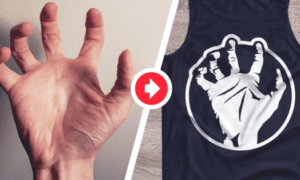Some people hear “chiropractor” and think, oh yeah, the back-cracking guy. That’s fair, but it’s only part of the picture. There’s a whole lot more happening behind the scenes at modern clinics, especially if you walk into the right one.
A full service chiropractor isn’t just lining up your spine and sending you home with a smile. They look at everything: muscles, joints, posture, movement, stress, even what you’re putting on your dinner plate. And sure, there’s still some cracking involved (the good kind), but it’s just one piece of the puzzle.
Let’s take a look at the kind of services they’re offering. It might surprise you.
1. Spinal Adjustments
This is the main event for a lot of folks. It’s what chiropractors are best known for, and honestly, when done right, it feels amazing. The idea is to restore proper movement to your joints, especially in the spine, but not only there.
When your back’s out of alignment, it doesn’t just ache. It pulls on everything else, throws off your gait, maybe gives you headaches or numb fingers. A quick, controlled adjustment can relieve pressure and help your body start working right again.
2. Muscle and Fascia Work
Tense muscles and tight fascia can mess up your alignment even after an adjustment. That’s why lots of chiropractors now work on soft tissues, too. They might use their hands, or a special tool that looks kind of like a dull butter knife, to release knots and restrictions.
It’s not quite a massage, and it’s definitely not a spa day. But it helps. Especially if you’re the kind of person who always feels stiff or has an old injury that never quite healed up.
3. Personalized Stretching and Strength Plans
Once things are moving right again, you’ve got to keep them that way. That’s where movement comes in. A good chiropractor might walk you through exercises that’ll support your recovery, not just in theory, but based on how your body actually moves or doesn’t move.
It’s not about hitting the gym harder. It’s more like waking up the muscles that have been taking a nap while others overwork to compensate.
4. Spinal Decompression
If you’ve ever felt like your back needs a good stretch, spinal decompression is that feeling dialed up. It’s often used for people with disc issues, like herniations or sciatica. You lay on a special table, and it gently pulls and releases to create space between vertebrae.
The goal isn’t to “pop” anything into place. It’s more like giving your spine room to breathe so the nerves stop screaming at you. Not painful, weirdly relaxing for some.
5. Electric Stimulation Therapy
E-stim is a weird one at first. They stick pads on your skin, and a little electric current pulses through the area. Your muscles twitch a bit, and it feels kind of like pins and needles, but not in a bad way.
It’s used to reduce inflammation, improve circulation, and help your body flush out waste. Especially good after an injury, or if you’re dealing with a muscle that’s just refusing to let go.
6. Cold Laser Therapy
Laser therapy might sound fancy and futuristic, but it’s actually been around a while. It uses low-level laser light to stimulate cell repair and reduce pain. Not hot, doesn’t burn, and most people don’t feel anything during treatment.
Used for things like tendonitis, bursitis, and joint inflammation. If you’ve got a chronic issue that doesn’t seem to respond to much else, this could be part of the plan.
Plenty of people show up thinking they’ll get fixed in one or two visits, but the body doesn’t always work like that. Healing is rarely a straight line. It depends on age, activity level, stress, sleep, and whether you actually do the stuff they tell you to at home. Chiropractors who take time to explain this tend to have better results with their patients. If you expect a quick fix without changing anything, odds are you’ll be back in the same spot a week later. Progress sticks when you’re part of it, not just showing up for the appointment.
7. Nutrition Support
A lot of people don’t connect what they eat with how they feel physically, but it matters. Food plays a role in inflammation, healing time, and pain levels. That’s why some chiropractors offer nutrition guidance. Maybe not a full-blown diet, but at least some direction.
You might get advice on anti-inflammatory foods, hydration, or supplements. Some clinics partner with wellness brands, others just offer basic tips. It all depends on what you need, and what you’re willing to do.
8. Posture and Ergonomics Coaching
Your job might be what’s hurting you. Seriously. Sitting too long, standing crooked, and looking down at your phone for hours is all death by a thousand misalignments. Chiropractors often assess your posture and how you move through the day.
They’ll make suggestions that don’t involve quitting your job. Maybe you need a better chair, or your monitor’s too low. Maybe your shoulders round forward from years of desk life. You’d be shocked what a few little tweaks can fix.
9. Lifestyle and Recovery Coaching
Chronic pain isn’t just a physical thing. Stress, sleep, and burnout are all connected. Some full-service clinics have started addressing those parts, too. No, they’re not acting like your therapist, but they do talk about how your habits affect your healing.
They might suggest recovery routines, rest strategies, or even help you reframe how you think about pain. Because if your nervous system is always on edge, no amount of stretching or adjusting will stick.
Not Just a Back Doctor
The best chiropractors aren’t just back doctors anymore. They’re movement experts, recovery nerds, and sometimes low-key life coaches. If you’re only going in for a quick adjustment and skipping the rest, you’re probably missing out on what modern chiropractic care can actually do for you.
And look, you don’t need to be a CrossFitter or in pain 24/7 to benefit. Maybe you just want to move better, sleep easier, or stop wincing every time you get out of a chair. There’s something on this list for basically everyone.


































